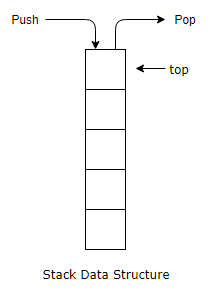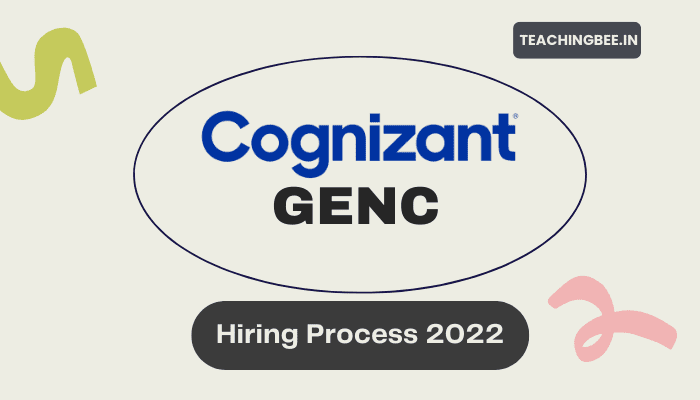Table of Contents
ToggleCognizant is one of the top IT companies that regularly hires people with various experience levels for various profiles. Each interview process has various rounds testing different type of knowledge among candidates. Cognizant Genc stands for Generation Cognizant in which candidates with little or no prior experience candidates are hired, which can be college freshers or still working on their degree.
Various Profiles In Cognizant Genc
- Cognizant GenC : Candidates with no or little programming expertise are recruited under this profile. Ability to handle challenging problems and providing efficient solution for the same is a must in the candidates for this role.
- Cognizant GenC Elevate: Candidates with fundamental knowledge in programming and database with little or no prior experience like college freshers.
- Cognizant GenC Pro – Candidates with expertise in enterprise platforms/products/specific technologies, such as Salesforces, PEGA, SAP are hired under this profile.
- Cognizant GenC Next – In GenC Next, Cognizant hires entry-level talent who are technically proficient, with matured coding skills and full stack abilities. Three months interniship followed by differential salary package is provided to candidates hired under this category.
Interview Process Under Various Cognizant Genc
Cognizant GenC Next
- Round 1 – Technical Skill Assessment Round: This round consists of MCQ, Coding Question and Database related Questions. The MCQ tests various topics like HTML/CSS, DSA, fundamental OOPS concepts etc.
- Round 2 – Technical Interview Round: In this round, the interviewer will ask questions about computer fundamentals, Projects mentioned in the resume, and coding questions
- Round 3 – HR Round: In this round, HR will ask the basic question like hobbies, favourite technology, your struggle, etc.
GenC, GenC Elevate, GenC Pro
- Round 1 – Aptitude Skill Assessment Round: This round consists of MCQ where Quantitative Aptitude, Logical Reasoning and Verbal Ability is tested. The Online Aptitude Skill Assessment will be conducted on the AMCAT platform
- Round 2 – Technical Interview Round: In this round, the interviewer will ask technical questions , Projects mentioned in the resume etc. The level and difficulty of technical questions depend on the profile for which candidate is applying. For. eg Cognizant GenC very basic techincal questions are asked.
- Round 3 – HR Round: In this round, HR will ask the basic question like hobbies, favourite technology, your struggle, etc.
Frequently Asked Cognizant GenC Interview Questions
What is the difference between Overloaded Methods and Overriden Methods?
| Method Overloading | Method Overriding |
|---|---|
| It is called compile-time polymorphism. | It is called run-time polymorphism. |
| It occurs within the class. | It is performed in two classes using inheritance |
| In this methods must have the same name and different signatures. | In this methods must have the same name and same signature. |
| The return type may or may not be the same, but number or type of parameters have to be different | The return type must be the same or co-variant. |
| Static binding is being used for overloaded methods. | Dynamic binding is being used for overriding methods. |
| Poor Performance due to compile time polymorphism. | Since the binding of overridden methods is being done at runtime, it provides better performance. |
| Number or type of parameters passed have to be different | Parameters paased should be same in method overriding. |
How would you differentiate between DELETE and TRUNCATE?
| TRUNCATE | DELETE |
| It is a DDL i.e Data Definition Command | It is a Data Manipulation Command |
| Execution occurs with table locking in which whole table is locked before removing all records | Execution occurs with row locking, row is locked before deletion. |
| It removes all rows from table | Deletion of rows occurs based on where condition |
| TRUNCATE TABLE removes the data by deallocating the data pages used to store the table data and records only the page deallocations in the transaction log. | The DELETE statement removes rows one at a time and records an entry in the transaction log for each deleted row. |
| Truncate uses the less transaction space than Delete statement. | Delete uses the more transaction space than Truncate statement. |
| Minimal logging in transaction log, so it is performance wise faster. | As it maintain the log, so it is slower than TRUNCATE. |
Define Stack Data Structure. And how can you implement it?
Stack is a linear data structure which follows LIFO(Last In First Out) or FILO(First In Last Out) order in which the operations are performed i.e every time an element is added, it goes on the top of the stack and the element to be removed is the element that is at the top of the stack, just like a pile of objects.


Basic Operations Of Stack:
| Operation | Function |
| push() | Insert an element into the stack |
| pop() | Remove an element from the stack |
| top() | Returns the top element of the stack. |
| isEmpty() | returns true if stack is empty else false |
| size() | returns the size of stack |
There are two ways to implement a stack
- Using array
- Using linked list
What are Primary Memory and Secondary memory?
Primary Memory is the main memory of the computer system. It is called volatile memory, meaning data gets lost when a power failure occurs.The primary memory is a semiconductor memory. It is costlier compared with secondary memory. The data accessing from primary memory is faster.
Two types of Primary Memory are:
- RAM
- ROM
Secondary Memory All secondary storage devices which are capable of storing high volume data is referred to secondary memory. It’s slower than primary memory. However, it can save a substantial amount of data, in the range of gigabytes to terabytes. This memory is also called backup storage or mass storage media.
What factors influence if a detection algorithm is required in a deadlock avoidance system?
How frequently a deadlock can occur when the algorithm is implemented and number of processes that are affected by deadlock if this algorithm is used determines whether a detection algorithm is required or not.
What is index hunting? How does it aid query performance?
The process of boosting the collection of indexes is called index hunting. It helps in improving the query performance as well as the speed of the database.
Index hunting helps in improving query performance by:
- Using query optimizer to coordinate queries with the workload.
- Observing the performance and effect of index and query distribution.
Other Cognizant GenC Interview Questions
- What is a Constructor?
- Explain what caching is and how does it work?
- What is an SSL Certificate?
- What is SDLC? What are its phases?
- What is Functional Dependency?
Conclusion
In this article we discussed all about Cognizant Genc , its recruiting process and discussed some important Cognizant Genc interview questions that are frequently asked in the interviews.
Checkout Other commonly asked questions here
Got a question or just want to chat? Comment below or drop by our forums, where a bunch of the friendliest people you’ll ever run into will be happy to help you out!



